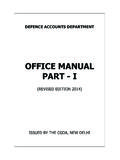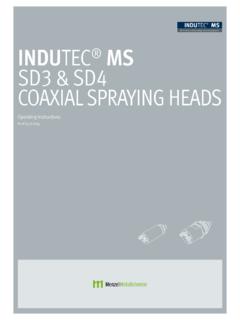Transcription of CIVIL AIR PATROL - CAP ES
1 CIVIL AIR PATROL air force Auxiliary Mission Aircrew Reference Text Revision 1 June 2007 This text is designed to provide: 1) the minimum academic knowledge required by the CIVIL Air PATROL (CAP) Mission Scanner, Observer and SAR/DR Pilot task guides and 2) knowledge beyond that required by the aircrew task guides that will serve as a reference and assist those who wish to learn more about the various subjects. Scanning is a systematic method of looking for objects such as downed aircraft or missing persons.
2 The Mission Scanner s primary responsibility is to maintain constant visual contact with the ground while over the search area. This responsibility makes each scanner a key member of the search aircrew. The Mission Observer is a scanner with expanded duties who usually sits in the right front seat. In addition to the primary duty of scanning while in the search area, the observer assists the pilot with planning, navigation, and communication. The observer may also server as mission commander, ensuring that all mission objectives are met.
3 The Mission SAR/DR Pilot is the aircraft commander and is responsible for the safety of the crew and the aircraft. The Mission Pilot must fly the aircraft precisely in order to execute mission procedures and search patterns so that the scanners have the best possible chance to achieve mission objectives. Naturally, as Pilot-in-Command the pilot must satisfy all pertinent FAA and CAP regulations pertaining to certification, currency and the operation of the aircraft; this text concentrates on mission-specific duties and responsibilities.
4 The importance of safety is emphasized throughout the text. Lessons learned in this text will enable aircrew members to operate in a safe and efficient manner, thus reducing accidents and incidents. Before beginning training in any of the aircrew ratings you should review and understand the current CAP 60-series regulations, which provide current operations and training guidance and requirements. Trainee prerequisites for each rating are provided in CAPR 60-3 Chapter 2 and in the Specialty Qualification Training Record (SQTR) for Mission Scanner, Mission Observer, and Mission Pilot.
5 NOTE: This text contains links to web sites, and web addresses often change. If selecting the link does not take you to the desired site, either try copying and pasting the url into your browser s address bar or search for the particular site or document with your favorite search engine. i Acknowledgements Many dedicated persons have contributed to the development of the text, slides, and attachments that make up the CAP Mission Aircrew Reference Text. Material was taken from CAP sources all over the country. There are too many to thank, but we will mention several important contributors.
6 The core of this text was developed from the Southwest Region Scanner/Observer Course. Developed, maintained and taught by several Reserve Officers in the CAP/RAP program that serves Texas Wing and Southwest Region, the course has been in existence for several years. Lt. Col. Robert H. Castle, USAFR led this effort. The text was then modified and expanded to serve as the classroom material for the National Emergency Services Academy (NESA) Mission Aircrew School, which was begun in 2000.
7 One of the school co-founders, Lt. Col. Rich Simerson, developed this text and the associated slides; he now maintains and updates the materials. The other co-founder, Lt. Col. Mike DuBois, provided invaluable input and was indispensable in shaping the course. Several instructors and students of the first two schools also contributed greatly, particularly Major Arden Heffernan, Major Earl Burress, Captain Galen Hall, and Major Scott Lanis. The NESA Director, Major John Desmarais, provided unstinting support and assistance. This text and associated training materials were developed under the auspices of the National Emergency Services Curriculum Project.
8 Valuable input was provided by one of the Middle East Region representatives, Lt. Col. Robert Ayres. This is a 'living' document that is being tested and improved through its use at the NESA Mission Aircrew School and through field-testing by units throughout the country as part of the Emergency Services Curriculum Project. Please direct comments (via e-mail) to the text administrator, Lt. Col. Rich Simerson, at Please be specific and provide justification for your comments. If you refer to specific text or figures, please identify them clearly.
9 If you have better pictures or slides than the ones appearing in the text or slides, or have others that you feel will improve the text and/or slides, please send them electronically and include explanatory notes or annotation. iiOrganization & Guidance One major requirement is that all students complete the Mission Scanner course first: the knowledge gained in the scanner course is a prerequisite for both the Observer and Pilot courses. This is consistent with the fact that Mission Scanner qualification is a prerequisite on both the MO and MP Specialty Qualification Training Records (SQTRs).
10 This text is augmented by three sets of slides: Scanner, Observer and Pilot. Using this text and the appropriate slide set(s), any of the three mission specialties can be taught separately or in any combination. Each chapter has a list of objectives to assist school directors, project leaders and instructors. Each objective is tied to one or more of the three mission specialties ( , S = Scanner; O = Observer, and P = Pilot). The associated slides also reference applicable objectives in the 'Notes' section of the slides. The table lists the objectives that each mission specialty has in a particular chapter of the text (if any).









